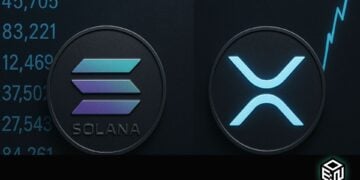• Avalanche hosts Wyoming’s first state-backed stablecoin (FRNT) and SkyBridge’s $300M hedge fund tokenization.
• It ranks third globally in tokenized U.S. Treasurys, with $638M onchain value.
• Despite record activity, AVAX is down 86% from its peak as market-wide liquidation pressures persist.
Avalanche is quietly becoming the go-to blockchain for governments and institutional investors looking to bring traditional assets onchain. In the past quarter, Wyoming’s Stable Token Commission launched the Frontier Stable Token (FRNT) on Avalanche and six other public blockchains, marking the first government-backed stablecoin in the U.S. The token is fully collateralized by U.S. dollars and short-term Treasury bills, maintaining a 102% reserve ratio—a milestone in blockchain-based state finance.
At the same time, SkyBridge Capital, led by Anthony Scaramucci, announced it will tokenize $300 million in hedge fund capital on Avalanche, highlighting a major leap for institutional finance moving into DeFi. Analytics firm Nansen summed it up neatly: Avalanche is “turning TradFi and government tech into onchain reality.”

Avalanche Climbs the Ranks in Tokenized Treasurys
According to RWA.xyz, Avalanche now ranks third among all blockchains by total value of tokenized U.S. Treasurys, sitting at $638 million, trailing only Ethereum and BNB Chain. These tokenized instruments bring liquidity and transparency to traditional securities, offering investors the ability to trade and hold government-backed assets in real time onchain.
This surge in adoption cements Avalanche’s position in the real-world asset (RWA) sector, one of the fastest-growing narratives in crypto. Government bodies, funds, and fintech players increasingly favor the chain for its high throughput, scalability, and regulatory readiness.

AVAX Price Still Trails Despite Record Onchain Activity
Despite its expanding footprint, AVAX has yet to reflect this growth in price. The token is still down 86% from its all-time high of $146, reached in November 2021. As of publication, it trades near $19.66, having slipped 33% this month amid October’s $19 billion liquidation wave triggered by renewed U.S.–China tariff tensions.
Yet, network activity remains strong: Avalanche averaged over 1 million daily transactions in Q3, with a record 51.6 million transactions in a single day. This disconnect between adoption and token performance underscores how broader market volatility continues to overshadow even the most promising fundamental developments.
The Road Ahead for Avalanche
Avalanche’s steady expansion into government-grade and institutional applications could eventually prove pivotal for long-term price recovery. With rising traction in tokenized treasurys, stablecoins, and capital markets infrastructure, the network is setting a foundation for sustained demand.
Still, sentiment in the broader crypto space needs to stabilize before AVAX can truly capitalize on these wins. If real-world tokenization continues at this pace, Avalanche could emerge as one of the few blockchains bridging the gap between Wall Street and Web3—even if its token hasn’t caught up just yet.














